
In the mid-1970s, Christine Colby Jacques was an aspiring concert dancer in New York City. “I came into class at Luigi’s [Jazz Dance Centre] one day, and there was hardly anyone there,” she recalls. “I found out there was an audition for Bob Fosse’s new show, Dancin’—that’s where everybody was!” Luckily, there were more auditions scheduled, and Colby Jacques got her shot to dance in front of Fosse. “About a week later, he called me himself to hire me,” she says. “I was floored.”
This month, a revival—styled as Bob Fosse’s DANCIN’—launches at NYC’s Music Box Theatre. Colby Jacques worked alongside director Wayne Cilento, who was also in the 1978 production, to reconstruct the original dance numbers and to teach the choreography to the new cast. One of her main goals was to “impart intent,” she says. “When you have the right mindset, the step gives more to the audience. It’s an acting approach. You’re not just a dancer who’s been programmed to move on a count.”
Before Dancin’, Colby Jacques performed with Luigi’s company and was a Radio City Rockette. Then came Fosse—and a whole new outlook. “I like to tell students, ‘Have a plan, but be ready for it to make a curve,’ ” she says. “My dream was to dance in a company, but I followed the curve into musical theater, and once I did, I found it so creative and challenging.”
Colby Jacques’ other professional credits include dancing on Broadway and in the first national tour of Sweet Charity; on film in A Chorus Line, Annie, and All That Jazz; and in a variety of commercials and industrials. She also danced in the first national tour of the musical Fosse. Throughout her performing career, she often taught dance classes on the side, and in 1992, when she moved to Kansas City, teaching began to take on more of a central role. She started with a jazz class at Kansas City Ballet and went on to lead a Fosse intensive for the company. “It’s exciting to see somebody who’s never done Fosse’s work start to find the inner workings of it,” she says. “There’s a certain thing that happens in your eye if you’re using the right imagery—and with Fosse, you have to use imagery.”
Colby Jacques has since taught jazz and musical theater dance on faculty and as a guest artist at multiple studios and schools. She’s been a lecturer at the University of Cincinnati College-Conservatory of Music, Interlochen Center for the Arts, Stephens College, Kansas State University and University of Kansas, and has led master classes through the Verdon Fosse Legacy. Even if she’s not teaching a strict Fosse workshop, her time with him is clear in her pedagogy. Luigi’s jazz technique is another major influence. “Luigi and Fosse may have had different movement vocabularies and styles,” she says, “but they both had this approach that it starts from the inside. It’s not what it looks like in the mirror. Your power and energy and love come from within.”
For her lesson plan, Colby Jacques shares a sequence from Fosse’s Crunchy Granola Suite, a number she describes as “pure joy.” She encourages dancers to focus on the imagery for each step. If the images she provides here don’t work for your students, feel free to come up with your own. “What makes great dancers great is not just that they can do a step, but the way they do it,” Colby Jacques says, “and that distinctness often comes from some image or a destination they’re reaching for with their body. That concept is one of the most profound gifts I took from working with Mr. Fosse.”
Please note: All photos below are by Ryan Bruce, courtesy Colby Jacques.
Step by Step
Counts 1 & 2
On count 1, bring the left foot to a parallel passé. At the same time, lift the palms up. As you bend the elbows, think of gathering or scooping something. On count 2, flip the palms and press the hands down with resistance as you step the left foot across in front of the right and drop into a deep plié. (While pressing the hands, you might think of a gymnast on the parallel bars, pushing down to lift the body up.) At the depth of the shape, your torso should be forward, almost like you’re standing on the edge of a cliff looking over.

Incorrect: The body is up too high and the knees are too straight.
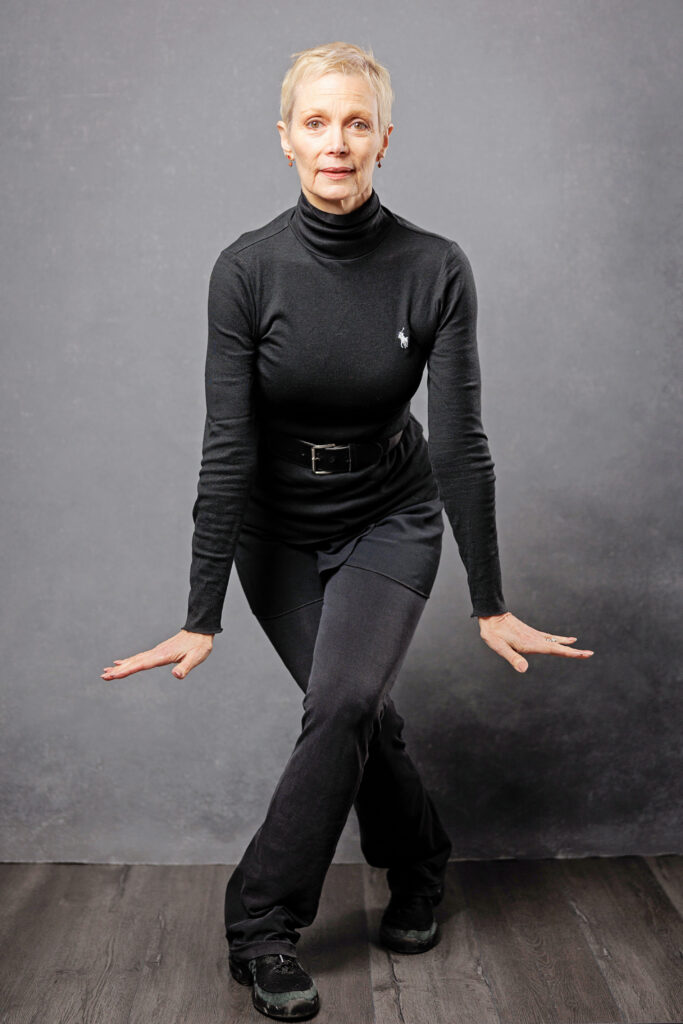
Counts 3 & 4
Hold for count 3. On the “and,” cock your head slightly to the right, and on count 4, do a sharp head roll to the left. Imagine quickly whipping around a long ponytail on top of your head.

Counts 5–8
Bring the right foot to the left ankle on count 5, keeping the body low and forward. Slide the right foot up the left leg to parallel passé on counts 6 and 7, letting the right hip lift and the left foot rise into relevé. As the right foot moves to passé, développé the right arm toward the ceiling. At the same time, on each count, do a “back bump” with the hips, tilting the pelvis back and returning to center (without tucking). At the very top of the shape, with the right arm reaching up, you might imagine somebody has you by the wrist to pull you out of the water. On count 8, imagine you’re stepping over a boulder to land on the right foot; press the right hand down with a flexed wrist.

The hip can lift to get the foot higher before you step out.
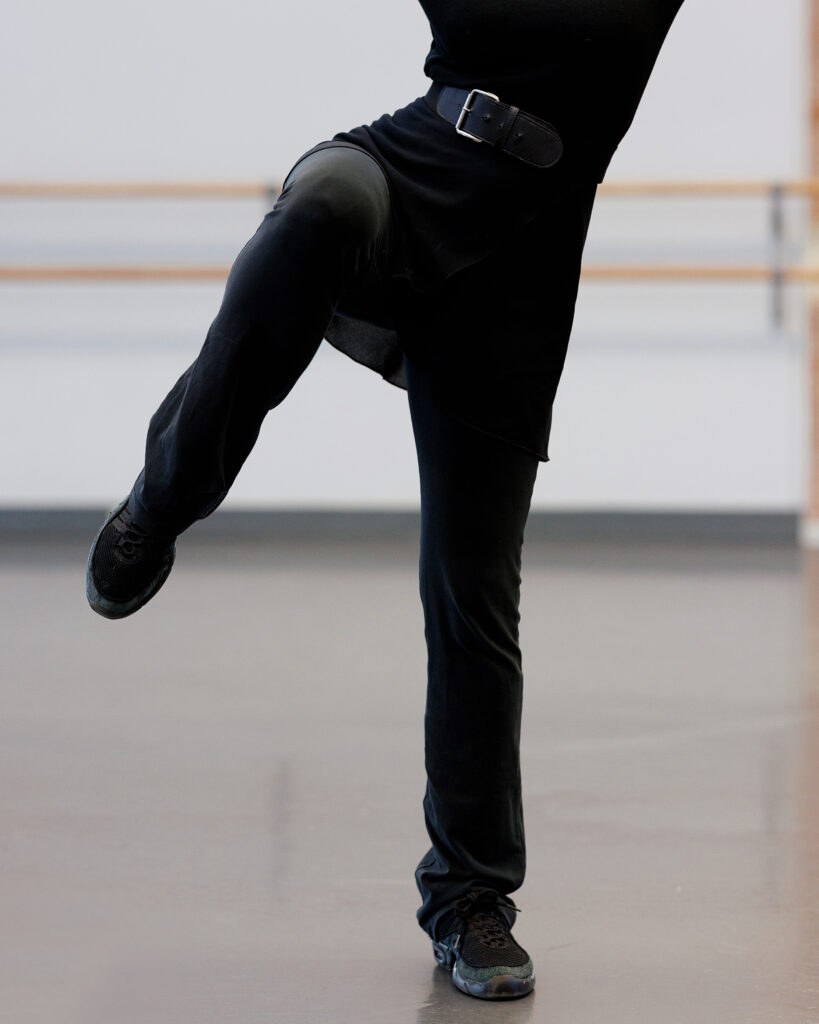
Counts 1 & 2
On the “and” count, bring the left foot to replace the right, and on count 1, touch the right foot to the side. At the same time, bring the right hand to the left shoulder and the left hand to the left hip, twisting the torso. On count 2, brush the right hand away from you. Use an image here: What are you brushing away?
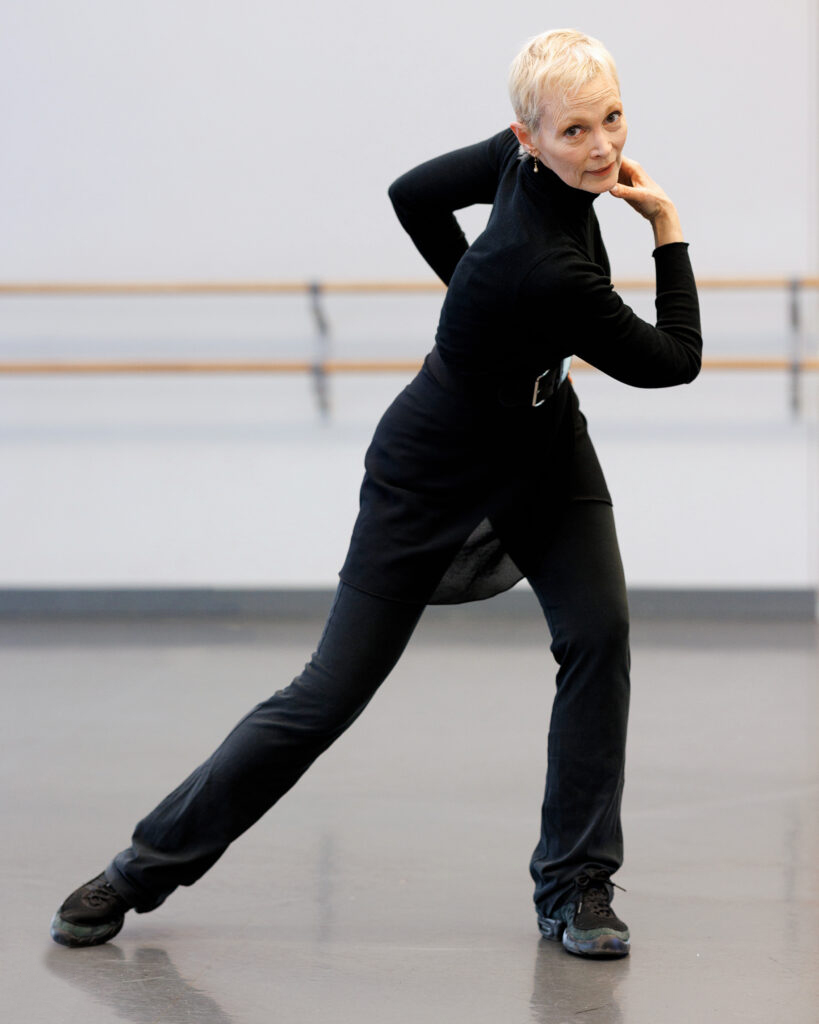
Incorrect: The body is not rotated enough. The audience should see your back arm.
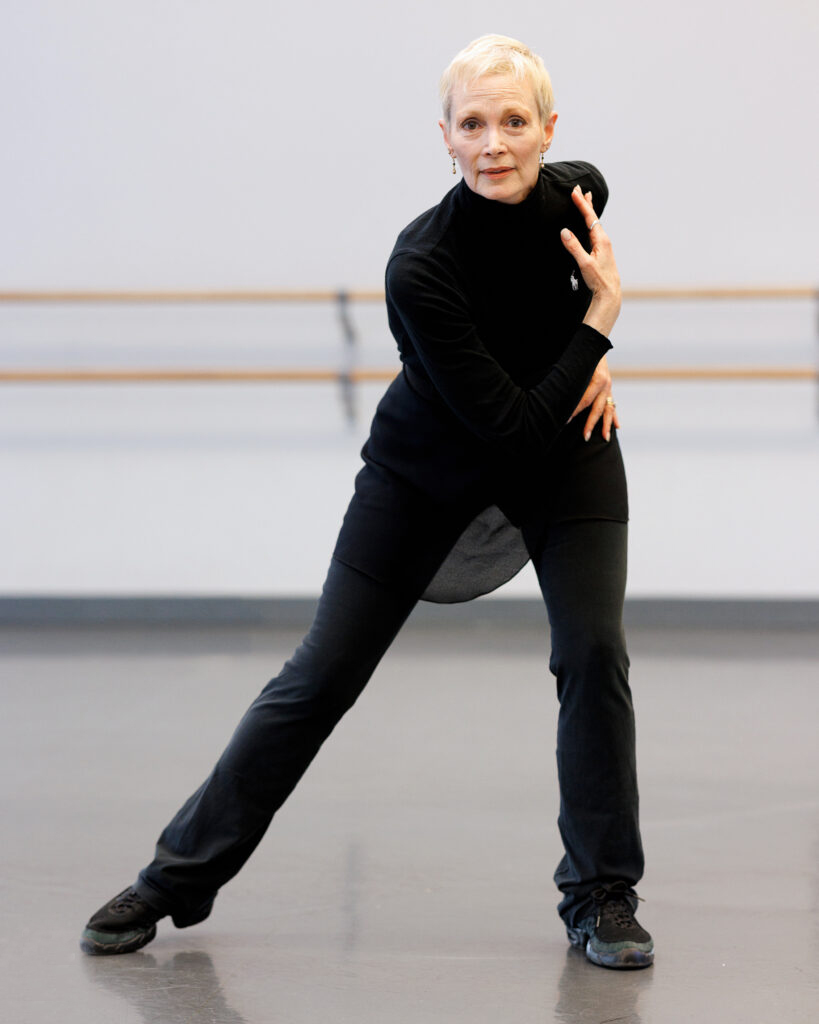
Counts 3 & 4
On the “and” count, bring the right foot to replace the left, and on count 3, touch the left foot to the side. At the same time, bring the left hand to the right shoulder and the right hand to the right hip, twisting the torso. On count 4, brush the left hand away from you, calling to mind the same image of brushing something away.
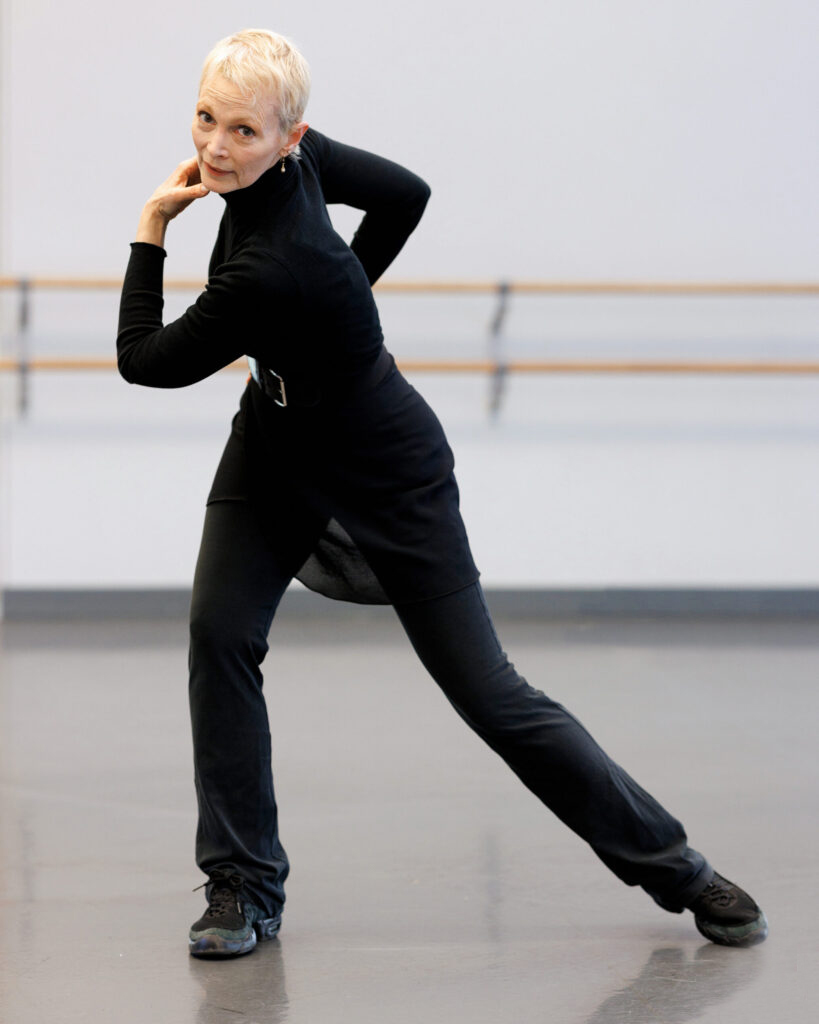
Counts 5 & 6
On the “and” count, replace the right foot with the left, and on count 5, touch the right foot to the side. At the same time, reach up with the right arm and bring the left hand to the left hip. Make sure the upper body is rotated slightly left and the standing leg is in a deep demi-plié. The right arm should be in front of the face. Hold for count 6.

Incorrect: The legs are too straight and the body is too front-facing.
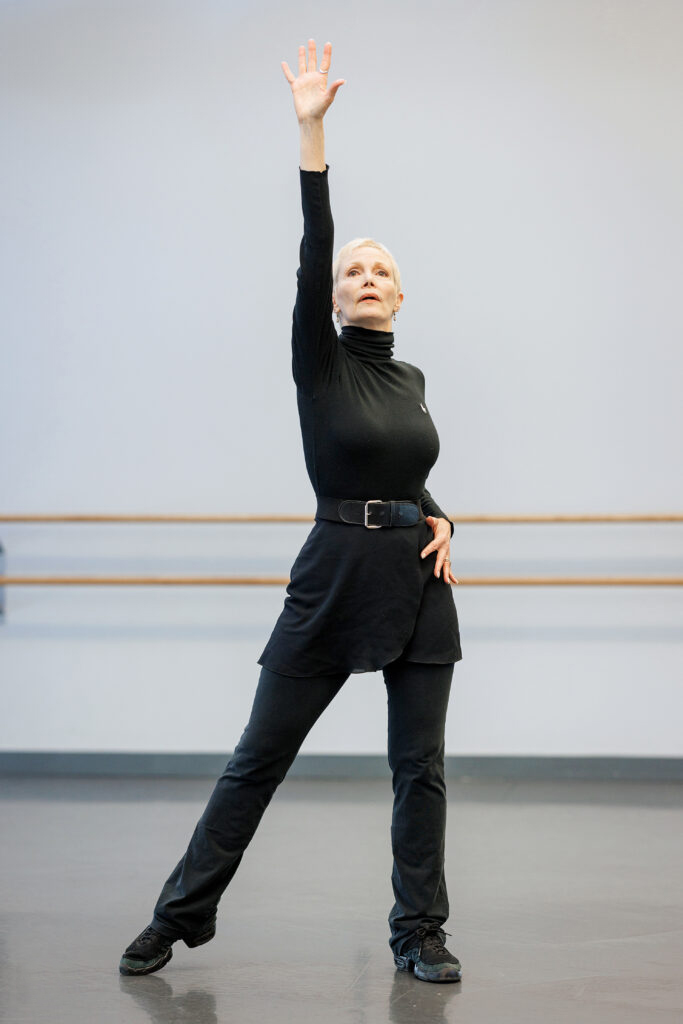
Counts 7 & 8
Repeat the “back bump,” tilting the pelvis back and returning to center (without tucking) to hit counts 7 and 8. The rest of the body should remain still. Think of this pelvis movement as “a little wink,” Colby Jacques says.

Watch the full-length video tutorial below:





